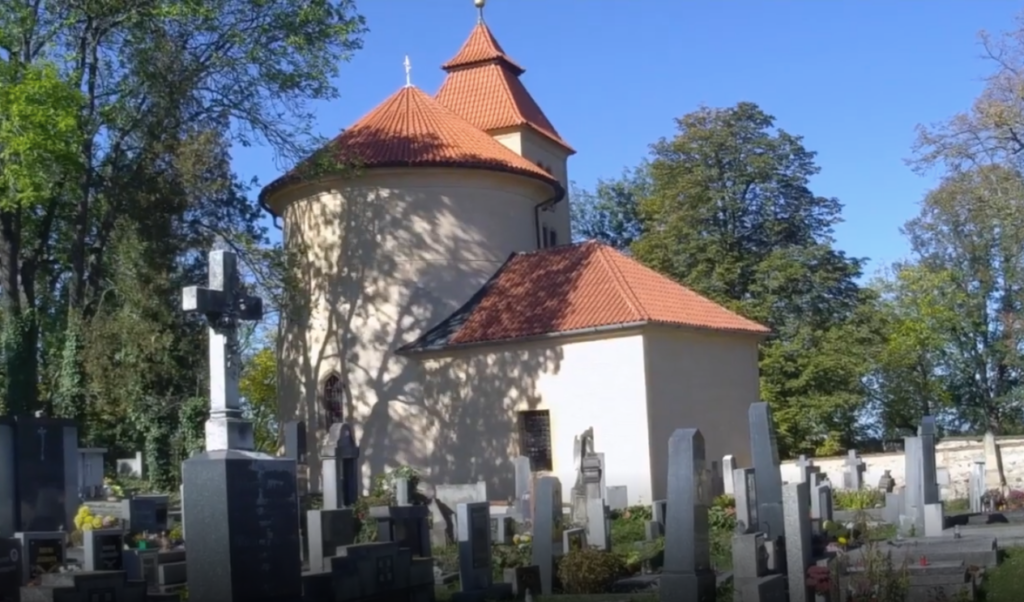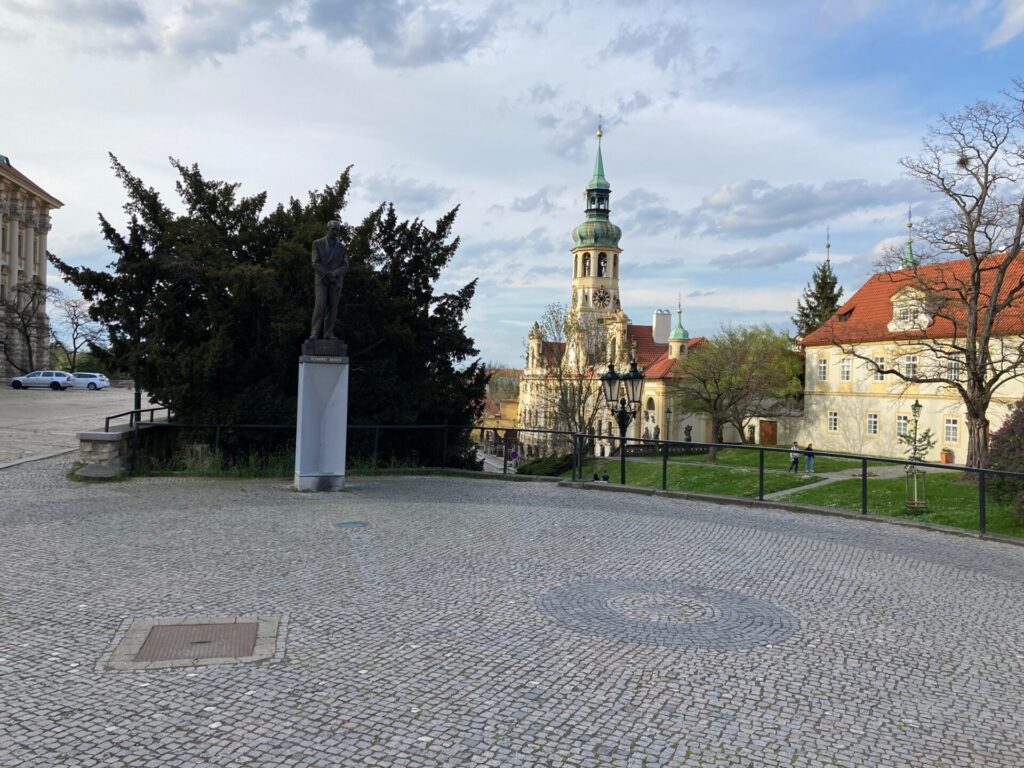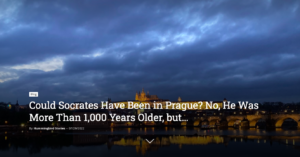The words of the headline are a legend about the end of the life of Princess Drahomíra, the mother of the Czech patron saint, Václav (Wenceslas). However, to make the story more accessible, saying a few words about their whole family is good.
Saint Václav’s grandma was Ludmila. She was a Christian who together with her husband Bořivoj I was baptized at the hands of Methodius. (This enabled the Přemyslids to gain political superiority over the other clans.) Václav’s parents were Vratislav I, the son of Ludmila and Bořivoj, and Drahomíra from the pagan tribe of the Polabian Slavs.
When Vratislav passed away at the age of 33, it was decided to divide power between Ludmila, then already a widow, and her daughter-in-law Drahomíra. She was to rule as regent in place of her young son Václav, the future prince. His grandmother Ludmila, however, was to bring up Václav and his brother Boleslav.

There were frequent political disputes between the two women, mother-in-law and daughter-in-law. Ludmila was a powerful personality; she was a competent woman. She can even be considered the first Czech politician. She could have been a strong opponent to Drahomíra. However, the disputes between the two women were probably also feminine and personal. Ludmila was a Christian, and Drahomíra was most likely still a heathen – she certainly didn’t like her Christian mother-in-law raising her sons.
It’s a very distant history, so much of the information may be more assumptions and opinions than facts. However, it is indisputable that in 921, Ludmila was 61 years old; she was much older than the average age of natural death at that time. Drahomíra may not have wanted to wait any longer for her death and ordered Ludmila to be murdered.
Ludmila was not killed by a sword but strangled with her veil – supposedly so that no blood would be spilled and Ludmila could not be declared a saint. Despite this, Ludmila is the first saint in Czech history.
Four years after Ludmila’s murder, her grandson Václav (future St. Wenceslas, patron saint of the Czech land) took over the reign. And because he took the side of his beloved grandmother, he had his mother first imprisoned and then expelled from the country. He may have been angry with his mother, but he was also afraid that she would also want his life. But after some time, he called her back.
The betrayal then came from his “little brother”, Boleslav. The generally accepted version is that Boleslav wanted to rule instead of his brother. That’s why he invited him to his home in the present-day town of Stará Boleslav (Old Boleslav). In the morning, the brothers met on their way to mass. Boleslav drew a sword on his brother, but he knocked it out of his hand because he did not want to come into conflict with his brother. Václav was then attacked by members of Boleslav’s guard. Václav ran to hide in the church, but they killed him on the steps. The second version says it was all a misunderstanding – the brothers quarreled and fought in the morning, and the men from Boleslav’s guard killed Václav rashly.
At the time of the murder, Drahomíra, the mother of the two brothers, also lived in Boleslav Castle. She was present at her son’s murder but could not prevent it. So she at least ensured that Václav’s body was brought to the church. And because she was among Václav’s followers at that time, she too began to fear for her life (probably not for nothing that her younger son was nicknamed Boleslav the Atrocious). That’s why she decided to leave the country – it is assumed that she wanted to go in the direction of eastern Bohemia, possibly as far as the territory of present-day Poland.
Further news about her is unknown, but there is one legend. Legend has it that when Princess Drahomíra fled the country, the carriage drove her across the present-day Loreta Square. In those times, the rotunda of St. Matthew was located on the circular place where the statue of President Beneš stands today. (The foundations of the rotunda are marked in the pavement by a strip of dark cobblestones.)
Drahomíra’s coachman wanted to pray there, but Drahomíra began to shout and swear. Then the ground opened, and the carriage with the horses and the princess fell into the deep and was never seen again. All that was left was the stink, and a coachman’s whip stuck in the ground.
The hole to the heart of the earth then closed up, but a fence was built around the place, and a stone column was erected, where this incident was described. The column stood in place until 1788, when it was tumbled and cut, allegedly in the name of fighting superstition. However, Drahomíra is still remembered today by the house that stands across the street – it is called the House at Drahomíra’s Column.






































